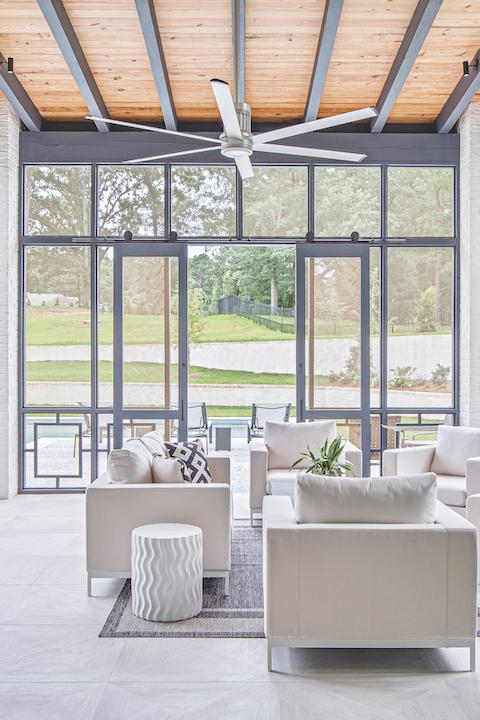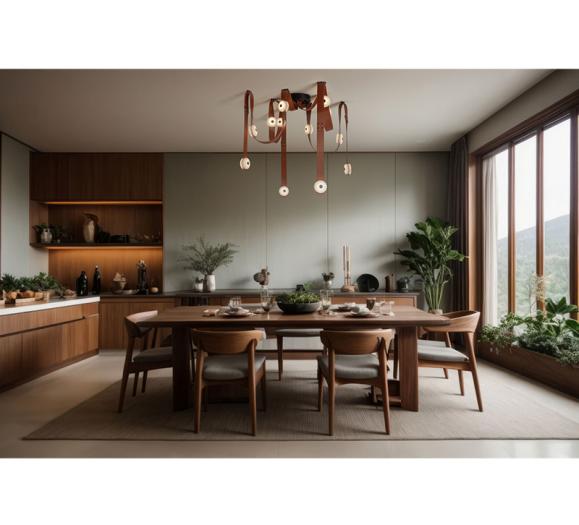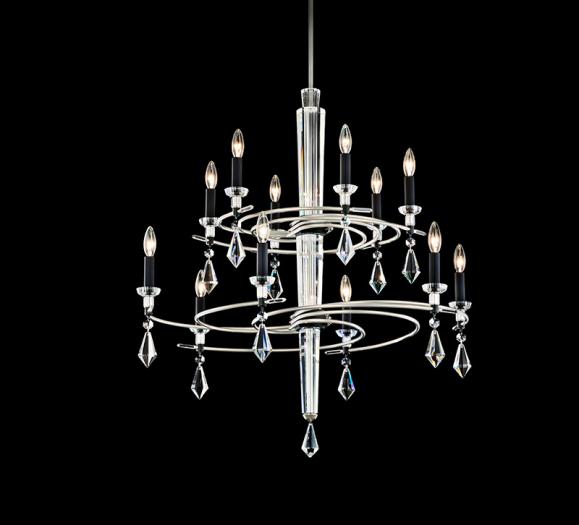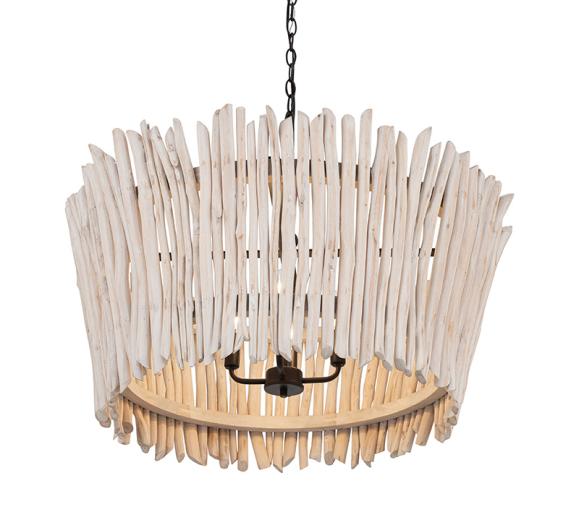Smart home technology has come a long way since its inception, and as it becomes more mainstream with consumers — Tech Crunch predicts that more than 55 percent of American homes will have at least one voice-enabled smart speaker by the year 2022 — opportunities for wired appliances that can speak with those devices and smartphone apps continue to grow too. Smart technology isn’t new to lighting, and ceiling fans, long a relatively low-tech workhorse in home comfort are getting smarter as well.
“Our lives and homes are becoming increasingly connected,” says Shelley Wald, President and CEO of WAC Lighting. “Smart technology has made it possible to become more energy-efficient without compromising comfort.”
The WiFi Difference in Smart Ceiling Fans
For WAC and other ceiling fan manufacturers at last month’s Lightovation at Dallas Market Center, Bluetooth- and WiFi-enabled smart fans have garnered a significant amount of attention from lighting retailers. They cite the availability of WiFi, accessories that can be added to existing fan technology and the consumer’s growing comfort with voice-activated and app technology as some of the reasons for the attention. Younger consumers, particularly, have grown up with their smartphones and WiFi and have come to expect the convenience it can afford.
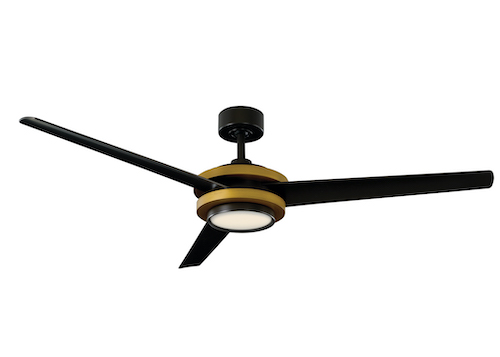
“I definitely think that we are not far from smart technology being mainstream — especially as more Millennials become homeowners. Their expectation is convenience and technology and that’s what smart technology offers,” says Kristina Christopher, Vice President of Sales and Marketing at Fanimation.
“It may be a surprise to realize how many smart products are already in our lives,” Wald adds. “Just like the advent of smartphone technology, what at first seemed untouchable has quickly become available for everyone. What was once aspirational is rapidly becoming a must-have for any well-designed home.”
While WAC Lighting and its Modern Forms division have had smart fans for a few years, the company is currently turning its attention to compatibility with more than just Alexa and Google Home, working on securing compliance certification with a variety of voice-activated command centers — most recently pairing with Control4 and Josh — which have a wider range of capabilities and can provide more privacy for consumers. The process is complex and requires working with the various smart services to integrate the technologies that control the fans and lighting.
“We are challenging ourselves to ensure our products fit seamlessly into the greater ecosystem within the home,” says Michael Sabolcik, Product Manager, IoT, for WAC Lighting. “We need to fit the design of the space architecturally, aesthetically and technologically. Our solutions have to play nicely with the control systems incorporated in
the design.”
Fanimation also started its journey in smart fan technology several years back, first via Bluetooth, but has also converted to WiFi-enabled technology this year. “At Fanimation, we adopted the idea of making our fans smarter years ago when we launched our fanSync Bluetooth app. We soon realized that WiFi and voice-activated controls were going to be very important to integrate our products into the plethora of smart options today’s consumers have. We launched fanSync WiFi in January of 2019. fanSync WiFi is a receiver accessory that the consumer can easily add to their ceiling fan in order to make it smart — either by controlling it via our user interface in the fanSync WiFi app on your Apple or Android device or via voice with Alexa, Google Home or have it integrated with your Nest or Honeywell Ecobee thermostat,” Christopher says. She posits that the integration of smart technology is making consumers more aware of the quality of light fixtures or ceiling fans as they are interacting with it more than simply turning it off and on. “With smart technology like our fanSync WiFi, you can dial in your light output and air comfort to fit your specific needs in the fanSync UI, create schedules, groups, etc.,” she adds.

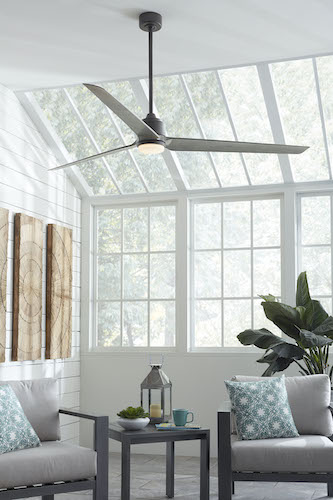
And Fanimation isn’t the only fan manufacturer utilizing an accessory to update its DC motor fans to connect with WiFi to sync with voice-enabled smart speakers and apps, as more showcased the technology this past month.
Hinkley, which recently acquired Regency Fans, bringing the lighting manufacturer into this new category, has also introduced a smart component to its offerings through a third-party app called Smart by Bond. Says Russ Klingel, National Sales Manager at the newly rebranded Hinkley (dropping the “Lighting” portion of its moniker as it expands into new categories), the accessory that talks to voice activation or a smartphone via WiFi, is capable of controlling multiple fans at one time, creating a convenience factor not otherwise available in ceiling fan technology, making it suitable for large homes with multiple fans as well as hospitality/commercial venues, such as restaurants, and commercial spaces.
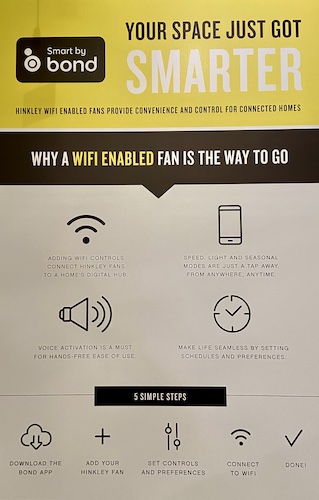

2019, has helped to add WiFi capability to the company’s fans in addition to Bluetooth.
According to Klingel, up to 99 fans can be controlled via the Smart by Bond app. The technology can sync with more than just ceiling fans as well — fireplaces and shades, for example — and can even manage HVAC and ceiling fan connectivity to help consumers save on energy costs by setting up a timer or talking to the fan from a remote location. Functions include ceiling fan activity as well as turning lights on and off and dimming capabilities. To turn the Hinkley DC motor ceiling fans smart, the Smart by Bond accessory is a simple install into the motor portion of the fan before it’s installed, and Hinkley is seeing “big interest” in the technology, including from the aforementioned hospitality segment.
Proprietary Adaptation
Fan and lighting manufacturer Craftmade previewed Craftmade Smart at this January’s Lightovation, which garnered enthusiastic feedback from retailers. The new WiFi-enabled program has covered all bases and offers a wall switch configuration for AC-driven fans as well as an accessory that can be embedded into the motor housing of a DC-driven ceiling fan. As with other accessories that sync with voice-enabled speakers and smartphone apps, Craftmade Smart will have the ability to control multiple elements at one time, including ceiling fans and their lighting components, and additional lighting fixtures in the near future. It is expected that up to 99 fans can be controlled via the associated app in its current testing phase.

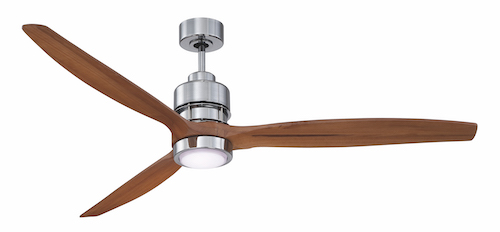
David Rauschuber, Senior Vice President at Craftmade, notes that this proprietary technology can also be retrofit into existing fan motor boxes and has the benefit of universal technology that will allow it to be compatible with fans outside of the Craftmade family, creating an additional unique selling proposition.
In testing now, Craftmade Smart will roll out in May and will be available to more than just the company’s fan assortment, with the technology rolling into lighting as the next phase. “Once you become familiar with this technology and start using it, you can’t believe how easy it is,” says Rauschuber. “There’s no required hub. As long as WiFi is working in the home, Craftmade Smart can be accessed from anywhere.”
Benefits of Smart Ceiling Fans
Convenience aside, smart technology in fans, as in other areas of the home, has myriad benefits for the end user. “Energy efficiency is a great benefit of smart technology. Instead of relying on your HVAC which is more costly to operate than a ceiling fan, utilize your ceiling fan to increase its speed when you want to bring your room temperature to a more comfortable level. Forgetting to turn your lights off after you leave your home, causing unnecessary kilowatt hours on your electric bill is another aspect — jump on to your fanSync WiFi app and turn your lights off from anywhere,” Fanimation’s Christopher says.
Adds WAC’s Wald, “Connected lighting and fan technology, paired with a purposeful lighting design layout, helps you fully enjoy your space effortlessly.”
Ceiling fans have not only seen renewed design options that help them blend into a room, smart technology has also simplified the usage, eliminating pull cords, switches and more. Fans heat a room as well as cool a room when reversed, but who ever remembers the proper direction for that? Smart technology increases the function of a fan simply by eliminating confusion.
“It’s all about intentionality,” says Wald. “Smart technology gives a designer options. Smart fan and luminaire placement can be thought through based on how the space will be used, traffic patterns, when it’s used most and even the color of the walls (reflectivity in the space).
Smart fans even communicate with HVAC systems and learn user behaviors, allowing for strategic placement in a home and reducing energy consumption.”
Whatever the reason for adding smart technology to an appliance previously perceived as low-tech, the trend continues to grow as consumers become more comfortable with voice-activated technology. We’re never far from our phones and the ability to turn down the fan in the middle of the night or turn it on from a remote location is appealing to many. Convenience breeds wellness in the home as much as any other functionality.
“I definitely believe that they will become a part of everyday life — as the cost associated goes down and the convenience and technology becomes more affordable and achievable,” says Christopher, of smart fans and other smart applications.



